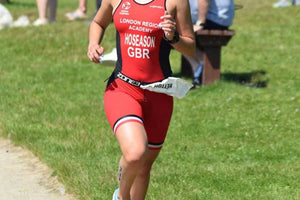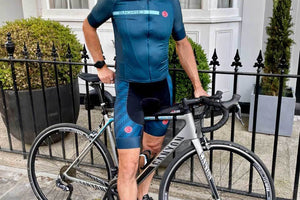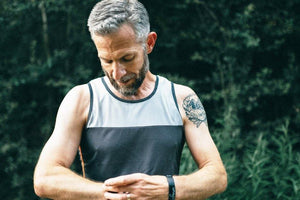The world now consumes about 80 billion new pieces of clothing every year. This is 400% more than the amount we consumed just two decades ago.
Our planet can’t keep up with our obsession with 'fast fashion'. This is the trend of always having to keep up with the latest fashion and not daring to be seen in last season's outfits. With fast fashion speeding up trends and constantly pushing us into the next season, your clothing is most likely to be wardrobe waste before it’s even reached its first birthday.
The Waste and Resources Action Programme (WRAP) conducted research on the clothing industry in the UK and found that we waste £30 billion in the UK each year in unused clothes.
New research from WRAP has found that:
- The annual footprints of a household’s new and existing clothing are equivalent to the weight of over 100 pairs of jeans, the water needed to fill over 1,000 bathtubs, and the carbon emissions from driving an average modern car for 6,000 miles.
- The average UK household owns around £4,000 worth of clothes – but around 30% of clothing in the average wardrobe has not been worn for at least a year, most commonly because it no longer fits.
- Extending the average life of clothes by just three months of active use per item would lead to a 5-10% reduction in each of the carbon, water and waste footprints
- Two-thirds of UK consumers buy or receive pre-owned (or second-hand) clothes, and there is a willingness to wear more, especially if a better range were available; and an estimated £140 million worth (350,000 tonnes) of used clothing goes to landfill in the UK every year.
- The carbon emissions generated by the clothing of the average household is equivalent to driving an average modern car 6,000 miles.
- Overall, clothing contributes around: 5% of the global carbon footprint of UK goods and services; and 6-8% of the global water footprint of UK products and household use.
- Global footprint Global footprint Household footprint of UK consumption per household equivalent to of clothing Carbon 38 million tonnes 1.5 tonnes of CO2e Driving a car CO2e emissions each year 6,000 miles Water 6,300 million m3 More than 200,000 Filling over 1,000 of water litres each year bathtubs to capacity Waste 1.8 million 70 kg each year Weight of over 100 tonnes of material pairs of jeans
|
Global footprint of UK consumption of clothing |
Global Footprint per household |
Household footprint equivalent to: |
|
38 million tonnes CO2e |
1.5 tonnes CO2e emissions each year |
Driving a car 6,000 miles |
|
63 million m3 of water |
More than 200,000 litres each year |
Filling over 1,000 bathtubs to capacity |
|
1.8 million tonnes of material |
70kg each year |
Weight of over 1000 pairs of jeans |
So what can we do to fix this vicious cycle?

Turning fast fashion into fair fashion
The research from WRAP indicates that a credible set of modest changes across the clothing life-cycle could reduce each of the carbon, water and waste footprints by as much as 10-20%. More ambitious changes could help reduce the cost of resources used to clothe the UK population by one-third, with greater savings still in the carbon and water footprints.
What makes ethical fashion sustainable?
In production: Reducing the carbon footprint of the production process by just 5% through cutting waste in production, dyeing and finishing could reduce our carbon footprint by 4%, our water usage by 8% and waste by 3%.
In quality: Creating quality garments which have an extended life expectancy could reduce carbon emissions by 7%, water by 10% and overall waste by 9%.
In the aftercare: Changing the way we launder our clothes, by washing on a cool heat and avoiding tumble drying could reduce our carbon footprint by 6%.
Once we’re finished with our clothes: Reusing and recycling by an extra 5% could reduce our carbon footprint by 3% and a 1% reduction in waste.
What makes Sundried ethical?
In production:
Sundried are audited by The Low Carbon Innovation Fund to ensure our products come to market with as ethical production as possible. This involves carefully selecting the materials we use, the factories we work with and the way we transport our goods.
In quality:
All of our products use blends of premium fabrics to extend the life expectancy of our clothing.
Extending the life of clothing by an extra nine months of active use would reduce carbon, waste and water footprints by around 20-30% each and cut resource costs by around 20% (£5 billion); this is the single most significant intervention according to WRAPS research.
Through our aftercare:
Laundry creates around one-quarter of the carbon footprint of clothing or 3 tonnes of CO2e per tonne of clothing as a result of energy use. Throughout all our products, marketing, and aftercare labels we encourage you to ‘wash cool’ ensuring that our products are cleaned at low temperatures meaning we can minimise our footprint, furthered by our recommendation to ‘sun dry’, eliminating the extra waste from a tumble dryer.
Recycling:
Sundried offer a recycling programme for all our old garments.
Around half of clothing is reused at present and over two-thirds of this goes overseas. Increasing the reuse rate in the UK and for export would reduce the total waste each year. There is significant willingness to buy or receive pre-owned clothes – more than two-thirds of adults have done so in the past year. Some 30% of clothing has not been worn for the last year and four in five people own at least some clothes that have not been worn because they no longer fit or need altering. This indicates there may be a substantial volume of good quality clothing suitable for reuse.





























































































